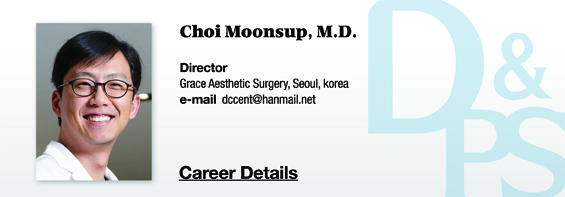
One key reason may be the drastic increase in the number of filler procedures. According to news reports, the market size for dermal fillers grew from KRW 60 billion in 2012 to 100 billion in 2013. Dividing this number by the cost of the filler product computes a large number of fillers that are being sold. Adding the number of patients receiving fat injection brings up the number of filler procedures per year even more. It may be said that the increase in side effects only reflects the drastic increase in the number of procedures being performed.
A recent study reported of 40 cases of blindness. Considering the number of procedures performed, the incidence of blindness is close to zero. Such a low rate of side effects shows that injectable fillers are quite safe. However, why is there such a widespread controversy over its side effects?
[Advertisement] FCR® (Fractional Prickle CoralCalcium Regentron) – Manufacturer: (www.illglobal.com)]
Many young patients receive dermal filler injections for the purpose of aesthetic improvement and tend to be shocked when they see side effects. Doctors may also take dermal fillers less seriously and could pay less attention to safety. In Korea, private practices specializing in filler and botulinum toxin injections are springing up everywhere, showing the widespread popularity of the procedures. Especially, competition has driven the prices down too low and lowered the quality with it. I find this phenomenon quite lamentable.
There are several rules that need to be followed to prevent unfortunate side effects such as vision loss. One must pay attention to the pressure at the blunt cannula tip or needle tip during injection. The doctor should make sure that little pressure is applied during injection to prevent side effects. When the pressure at the tip of the needle or cannula is higher than that of the capillaries, the filler material can flow into the open blood vessels and cause blindness and other serious complications. It is important to use a small needle that can control the injection at a consistent pressure and slowly pull the needle back as you push the plunger for injection. Moreover, one should pay attention to the physical characteristics of the filler product and the syringe size. Fillers with a high value of G", modulus of elasticity, is highly viscous and requires more caution during injection. These fillers should be injected using a smaller syringe.
In Korea and other Asian countries, filler injections are commonly carried out from the glabella to the tip of the nose. Many arteries that lead to the eyes pass under the glabella and one must be extremely careful performing injections in this area. The Ministry of Food and Drug Safety (MFDS) of Korea has banned the use of permanent fillers in the glabella and recommended dissolvable fillers. However, there is no scientific ground for this recommendation.
I find the above recommendation by MFDS quite lacking as it does not address fat injection which can also be performed in the glabella. It is important to understand that regardless of what material is used – permanent filler, semi-permanent filler, dissolvable filler or fat, etc. – the glabella is like a mine field of possible problems and one should be very careful.
Unfortunately, no clear techniques are available for preventing vision loss from injectable fillers. The best strategy would be to practice great caution in risky areas.
-To be continued-




















